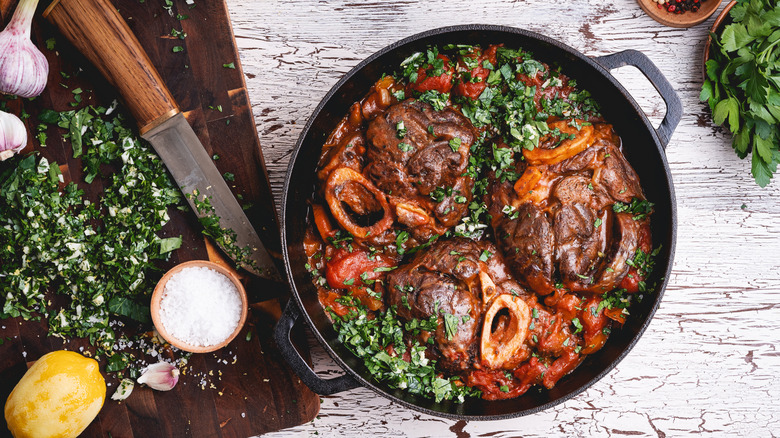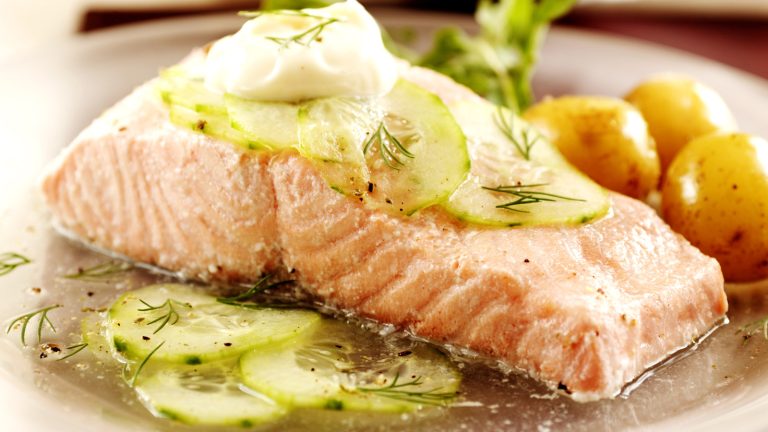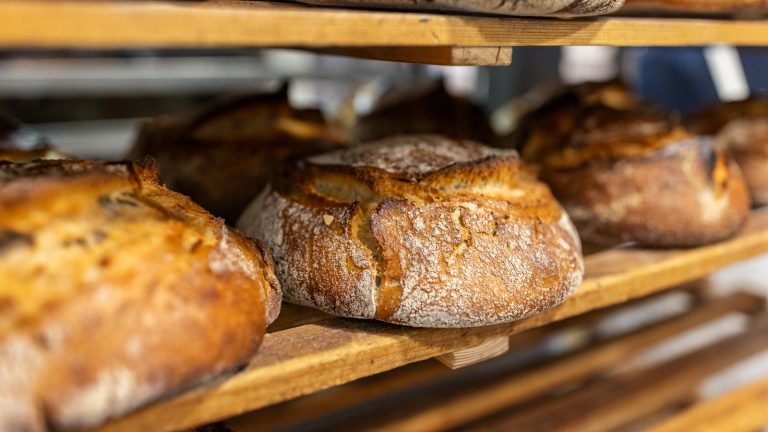Unless you really like excessive chewing, typically you wouldn’t seek out a tough cut of steak. Most people would look for a cut that’s tender and juicy, buttery and succulent. But actually, these cuts aren’t for everyone or every situation. Some of them can be on the expensive side (like filet mignon), and others may not be well suited to a certain cooking method (like trying to braise a ribeye). So really, tough cuts of steak do have their place — even what is probably the toughest cut of all, the shank.
Meat’s taste and texture are influenced by a lot of factors, including the specific animal’s diet and age. But, generalizations can be made about particular cuts because the taste and texture are also affected by where the cut is located on the cow’s body and how those muscles are used. If the muscles are worked a lot and the cow has to be strong, they will have more connective tissue and thicker muscle fibers, contributing to a tough and sinewy texture.
The shank, which is frequently sold as a cross cut with the bone included, is found in the thigh area of a cow’s front and back legs, and those muscles nearly constantly support about 1,000 pounds of the animal as it walks across the fields. That’s a lot of activity. Between the hard work, the lack of fat in the area, and the ample amount of connective tissue, the shank’s toughness is unsurprising. However, that certainly doesn’t mean home cooks should avoid it altogether.
Getting the cut from tough to tender
Because the shank’s toughness made it unpopular, it can be difficult to find in stores. If you do find it, though, it will typically be relatively inexpensive, and it can be worth the buy. The shank may be tough, but it’s very lean and has a lot of rich flavor that can be harnessed if you know the right ways to cook it.
You can start improving the texture even before cooking begins by using a marinade to help dissolve tough fibers or by leaning on acidic fruits to tenderize the meat. It also helps to score the cut or use the fork method for better steak texture.
Like many tough cuts, the shank responds well to low and slow cooking methods. The fibers that contribute to its less-than-ideal texture contain collagen; when that collagen is cooked for a long period, it turns into gelatin and makes the meat much more tender. Braising is a popular route to succulent shank, allowing the cut to cook at a low temperature for a long period in liquid like broth or wine; Osso Bucco, a beloved Italian dish of shank, vegetables, and wine, relies on this method. Similarly, you can add shank to a soup or stew, which will enhance its flavor while the connective tissue breaks down. You can also put it in the oven to roast it and get a crispy brown crust if you stick to the low and slow principle.






